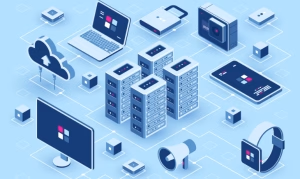Introduction
If you’ve ever looked at your cloud bill and wondered, “Wait… how did it get this high?” — welcome to the club.
Most businesses start small, spinning up a few servers here and there. Then someone adds a testing environment, another adds analytics, and before long, the monthly total starts climbing faster than the team’s growth chart.
At ChromeIS, we’ve seen this pattern everywhere — from small agencies in Lahore to enterprise setups abroad. The issue isn’t the cloud. It’s how people use it.
The trick is not to panic or downsize everything. The smarter move is to manage it: clean up waste, automate the boring stuff, and keep the finance and tech folks talking. That’s where rightsizing, spot instances, and FinOps come in.
Rightsizing — the Polite Way to Say “Stop Overpaying”
It happens to everyone. You launch a project, pick a big server “just in case,” and forget about it. Six months later, it’s still running at 20% capacity — quietly burning cash.
Rightsizing is just a fancy term for aligning what you use with what you pay for.
Here’s what usually works:
- Watch server usage for a few weeks.
- Downscale instances that rarely touch 50% load.
- Set alerts for unusual spikes before they cost you.
We helped a client in Karachi do exactly that. They had 14 servers running at half capacity. After tuning and automating scale rules, they saved 41% in their first month — without a single slowdown.
That’s rightsizing in a nutshell: less waste, same performance.

Spot Instances — Temporary Workhorses, Permanent Savings
Cloud providers rent out spare capacity at deep discounts. Those are spot instances, and they can be 70% cheaper. The catch? They might disappear anytime.
They’re great for short jobs — testing, backups, rendering, or analytics. Anything that can stop and resume later.
For everyday workloads, reserved instances are the opposite: stable, predictable, and cheaper when booked long-term.
At ChromeIS, we usually mix both. It’s like a good team: some full-timers, some freelancers — everyone doing what they’re best at.
One e-commerce client cut costs by 55% using that combo. Their checkout system stayed on reserved instances, but image-processing jobs ran on spot machines.
FinOps — When Tech and Finance Finally Speak the Same Language
This one’s a game-changer. FinOps isn’t a software or a plugin — it’s teamwork.
It means finance and engineering share visibility into costs.
The devs know what every resource costs. The finance team understands why that extra instance matters.
When we rolled this out for a SaaS company in Lahore, their engineers started tagging resources by project. For the first time, they could see which features were eating the most budget.
Within three months, their spend dropped by half, simply because they knew where to look. That’s FinOps: transparency that pays.
Automate the Obvious
Manual reviews are fine — until you forget them. Automation catches what you miss.
ChromeIS dashboards, for instance, track resource usage 24/7. If something sits idle for too long, the system flags it. It’s like having an accountant who never sleeps.
We’ve built scripts that turn off testing environments outside office hours. Developers don’t even notice, but the finance team sure does — the monthly bill goes down automatically.
Don’t Forget Common Sense
Even the smartest dashboards can’t replace experience. Some “idle” servers are backups or emergency nodes. That’s where a human eye matters.
Once a month, sit down with your team — IT and finance together. Look at the numbers. Ask, “Do we really need this?” It’s a simple meeting that can save thousands.
The ChromeIS Way
For us at ChromeIS, cloud vps control isn’t about penny-pinching. It’s about smart architecture.
We help businesses:
- Spot and remove hidden waste.
- Plan scalable infrastructure.
- Predict bills before they arrive.
Our tools monitor resources in real time, but it’s the people behind them — the engineers and analysts — who make it work.
You can’t fix cloud waste with a single product. You fix it by paying attention.
Final Thoughts
Your cloud bill shouldn’t be a mystery. The more visibility you have, the more control you gain.
Start small. Track usage. Right-size what’s bloated. Mix reserved and spot resources. Build a FinOps habit.
That’s how real savings happen — not by cutting corners, but by managing what matters.
And if you’d rather not juggle all that yourself, ChromeIS is happy to handle it. We’ve done it for dozens of companies — quietly saving them thousands, one server at a time.
Because in the cloud, efficiency isn’t about doing less.
It’s about doing smart.
Similar Post
The Silent Cost of Wrong Hosting: How Cheap Plans Damage Small Businesses in Pakistan
Small businesses in Pakistan often make the same mistake
What “Unlimited Hosting” Should Actually Mean in 2026
Every year, hosting companies come up with new buzzwords



